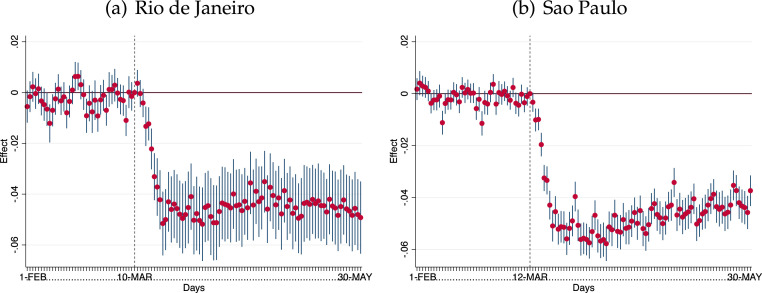Fig. 2.
Dynamic difference-in-differences analysis: Effect of NPIs on social distancing in areas with slums relative to those without slums. Notes. The figure shows the results for coefficients estimated from Eq. (1). Coefficients should be interpreted as a change in percentage points relative to the base period, which corresponds to the day before each NPI. Vertical dotted lines indicate the day of the NPI in each city. The “treated group” is composed of hexagons with at least one housing unit in a slum. We use 841 hexagons in Rio de Janeiro and 1,301 hexagons in Sao Paulo. Data are provided at the hexagon-day level. The dependent variable is the social distancing index for hexagon on day . Standard errors clustered at the hexagon level. Confidence intervals: 95%.

